Inside: In part 2 of this 4-part series, you’ll learn how to take advantage of the weekly cycle to create weekly routines and rituals that children can anticipate and build upon. Part 1 explores daily rituals, part 3 monthly rituals, and part 4 seasonal rituals.
A Weekly Reading Routine and Ritual
Every Monday morning, I pull a new big book out of the closet and place it on the easel. Each day, we spend time with this book, doing something a little different each time we read it. On Friday, I take it off the easel, put it back in the closet, and put out any small copies I have available for the children.
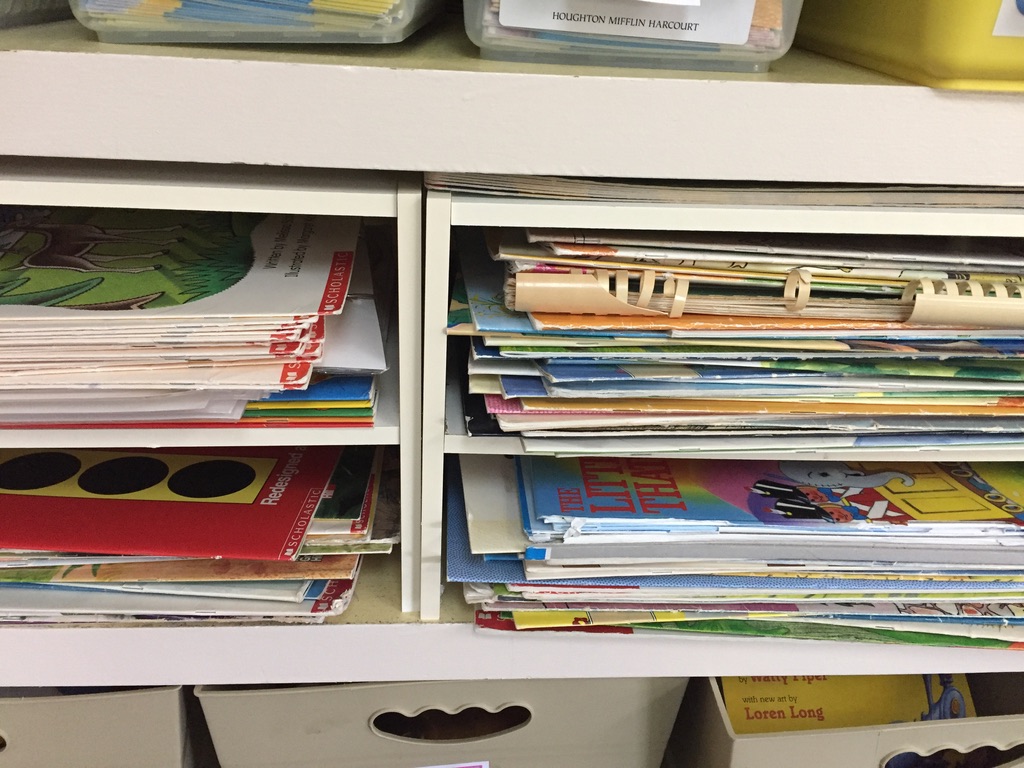
This is a simple weekly task, but a closer look reveals SO much more.
Let’s dig deeper.
When the children arrive on Monday morning, they anticipate that a new book will be on the easel. They are naturally curious about it and begin to think and talk about it. Their brains are already engaged with the book before we even begin to work with it that day.

Each day as I read it, I teach them something new about how stories work and because most are predictable, repetitive stories, they begin to join in the reading. By the end of the week, they know and love this book and can’t wait to get their hands on it, making it a great choice for their book boxes.
This growing book collection provides great choices for retelling and the children practice both telling the story from the pictures and using props that we have in the classroom. And later in the year, many of the children find themselves reading the words in these beloved books.
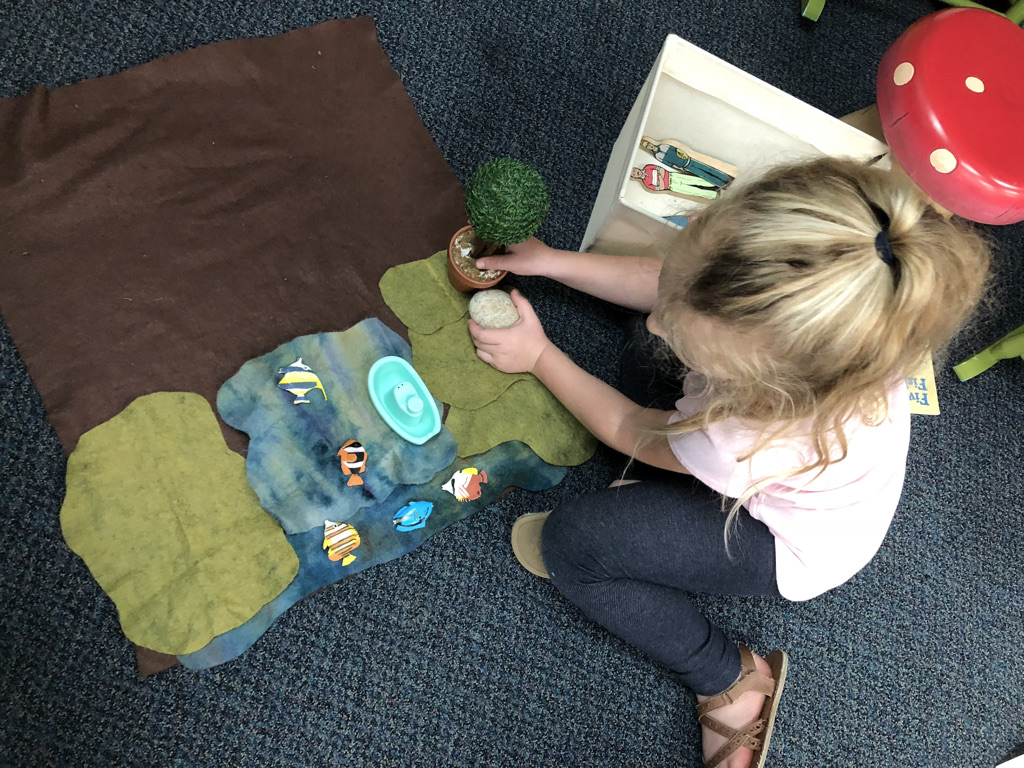
At the end of the year, there are 36 books that we have come to know deeply and celebrate by voting on our top ten favorites. During our last 10 days together, we read one of those books each day until we get to our number one pick.

This rich book experience is a routine (shared reading), a ritual (“unwrapping” the book each week as if it were a present) and even a tradition (annual voting to find top-ten favorites). To find out more, read Shared Reading: A Weekly Book Routine.
More Weekly Routines
Planning around the weekly cycle, not only gives children something to anticipate each week, but it makes planning a whole lot easier.
Here are more routines and rituals that center around our weekly cycle:
Weekly Song: In addition to a weekly big book, we also learn a weekly song. These are traditional songs such as
B-I-N-G-O or Down by the Bay and they are wonderful for playing with language and phonemic awareness activities. I also include several number rhymes such as Five Little Pumpkins or Five Green and Speckled Frogs to help children build number sense skills through songs. The routine for our songs, is similar to the one described above for big books, except the song sheets are compiled into a song book that we add to each week.
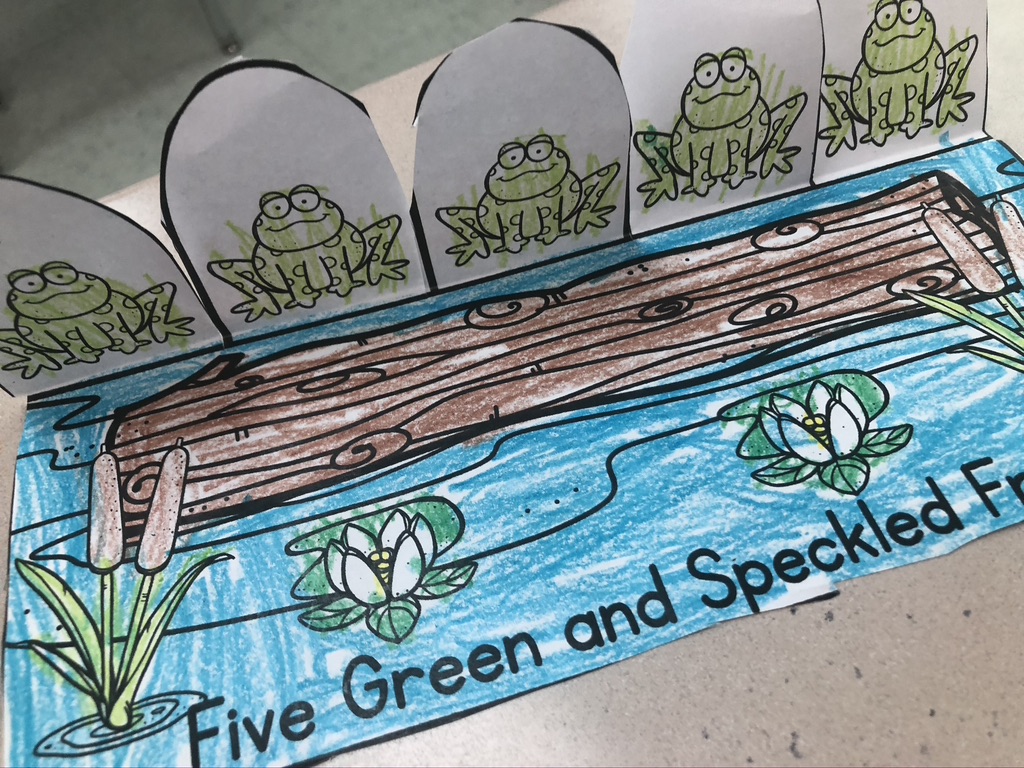
Wonder of the Week: Each week I bring in an object (usually found in nature) that I place inside a Mystery Bag. I give 3 clues about the object, drawing on properties and attributes that match our math and science learning (i.e. living/nonliving, 3D shapes, longer than my hand, etc.) Once the children guess it, we explore the object in some way – either placing it in the take-apart tub, adding it to our cool collections tray, or using it for an experiment.
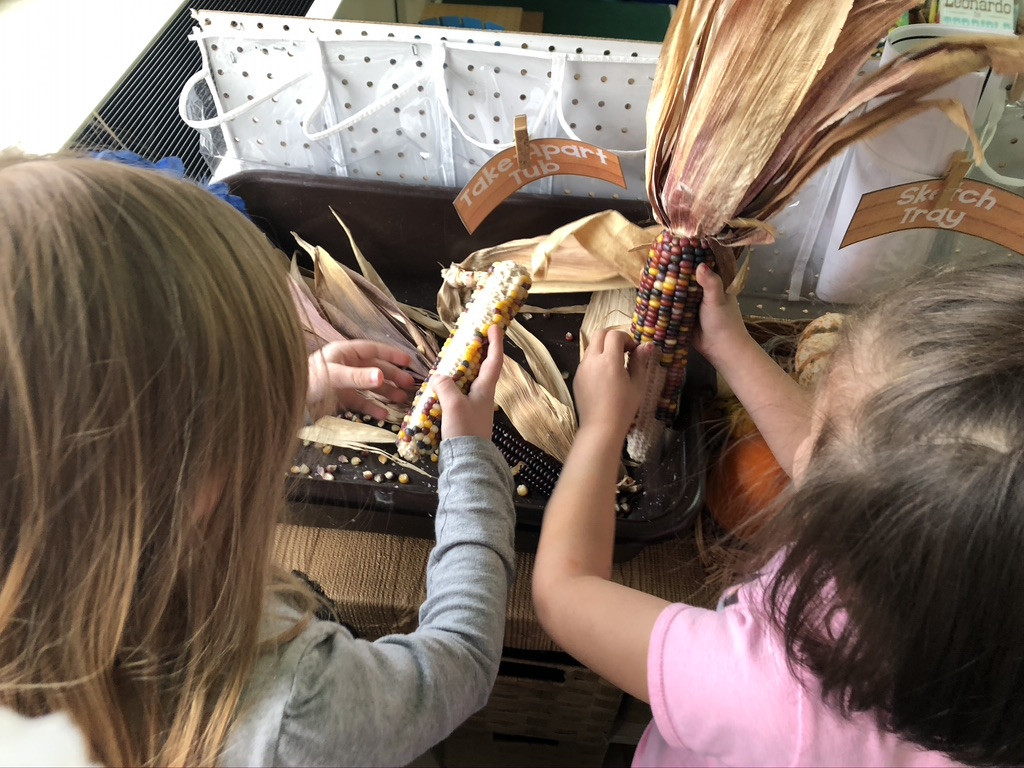
Character Strength: At my school, we use the Positivity Project, and each week we introduce a new character strength for children to learn about and reflect upon. As the week goes on, we look for children demonstrating that strength and highlight their positive actions.
Table Teams: Each week I award table manner sticks (craft sticks) to table teams showing great table manners. At the beginning of the week, we count up each tables’ sticks and the winner becomes our VIP Table for the next week. They get to keep a trophy (a balloon weight) on their table for the whole next week and get called first whenever we line up.
Center Management: Since the discovery centers I use are open-ended, things can be rotated in and out on an as need basis rather than in a time-bound way. However, I find that it helps to choose one center/week to tidy up and think about materials you may want to add or remove. This also means that you are only introducing new materials once/week. I have found that once a day is too often and once a month is not enough, but once/week works really well.
Planning Weekly Routines Around Days of the Week
In addition to the ideas shared above, I also attach significance to specific days of the week for some routines. Here are examples of those:
Morning Meeting Share: I assign a different type of share for each day of the week.
Monday: News Share (Kids share their news from the weekend)
Tuesday: Talk-About it Tuesday (One child shares a problem and we work as a class to create solutions)
Wednesday: Wonder Wednesday (I ask a “wonder question” for kids to answer in a complete sentence)
Thursday: Thoughtful Thursday (Children share a kindness that they have given or received)
Friday: Favorites Friday (Children share their favorite part of the week and tell why)
Warm-Ups: I often plan quick warm-up activities before reading, writing, and math workshop. These might include a song, read aloud, flash cards, fluency rings, games, quick-writes etc. These are also built around days of the week and change as skills grow and develop.
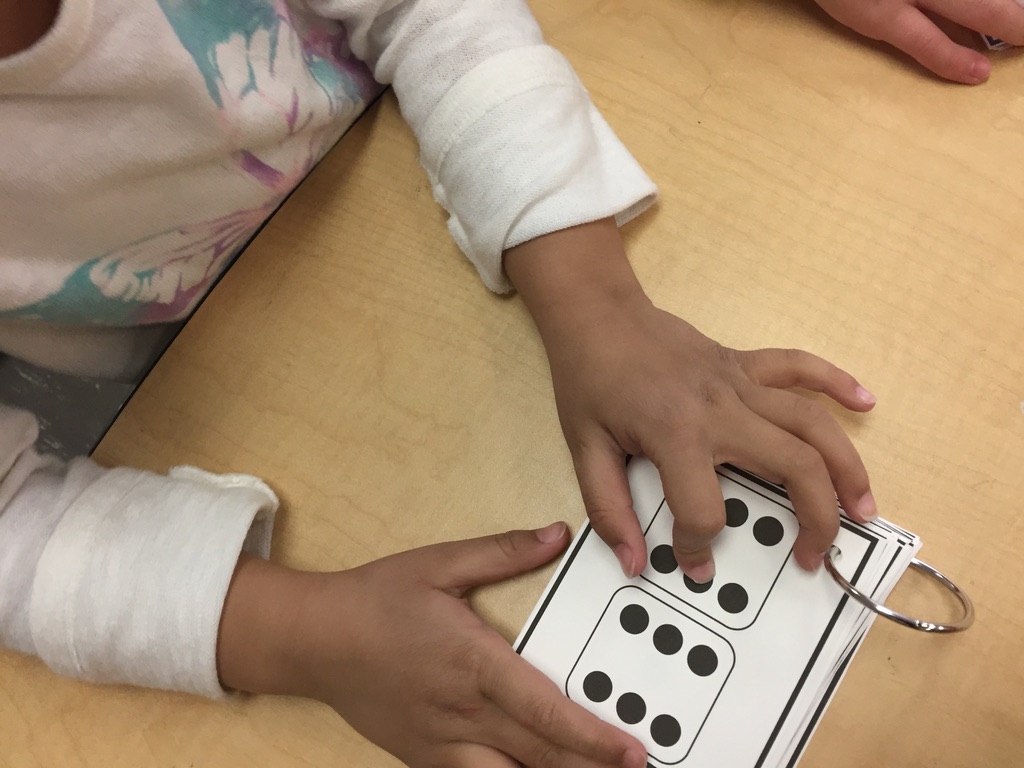
Word Work: This block of time in our day is used to introduce letters/sounds, sight words, and word families. With each, I create a routine and attach a different activity for each day of the week. For example, on Monday, we might be introduced to the new letters for the week, on Tuesday, we learn how to write it, on Wednesday we do letter pages, on Thursday we work with our magnet boards, and on Friday we do letter books.
Shared Reading: In the introduction, I talk about our weekly shared reading routine and mention that each day we focus on a different aspect of the book. On Monday, our focus is on comprehension, Tuesday is story elements, Wednesday is vocabulary, Thursday is text features/structure, and Friday we act it out or make props or story maps for retelling. This routine helps me build and cycle back through much of my curriculum in a joyful way.

Book Shopping: Once we begin using book boxes, I assign a few kids a different day of the week to “book shop.” They do this upon arrival, so we don’t need to devote any of our reading workshop time to this and it creates less distraction when children are reading independently.
Check-Ups: When I’m doing assessments or “check-ups” as we call them, I assign a day of the week to 4-5 students and then set the goal to meet with those kids on those days. And when I let the kids know their assigned day, they help to make me accountable to stick with the schedule.
Creating Your Own Weekly Routines and Rituals
Use the above list to get you started thinking about what weekly routines and rituals you want to create and carry out with your own class. Begin by taking out your planbook and looking at the previous weeks. Look for the routines that are hidden within it. Ask yourself:
- How can I be more intentional about how this routine is carried out?
- How can I individualize it with something that is meaningful to me or our class?
- Are there tools or materials that I could use to make it more meaningful, fun, or playful?
You might also think how you can repeat some isolated activities that have worked really well by by assigning them a specific day of the week. You can even have fun with it and use alliteration such as Make-it Monday, Talk Tuesday, Word Work Wednesday, etc.
For help on creating your own classroom routines/rituals, download this free Routines and Rituals Toolkit and check out the Growing Traditions page in the Roots & Wings Resource Library.
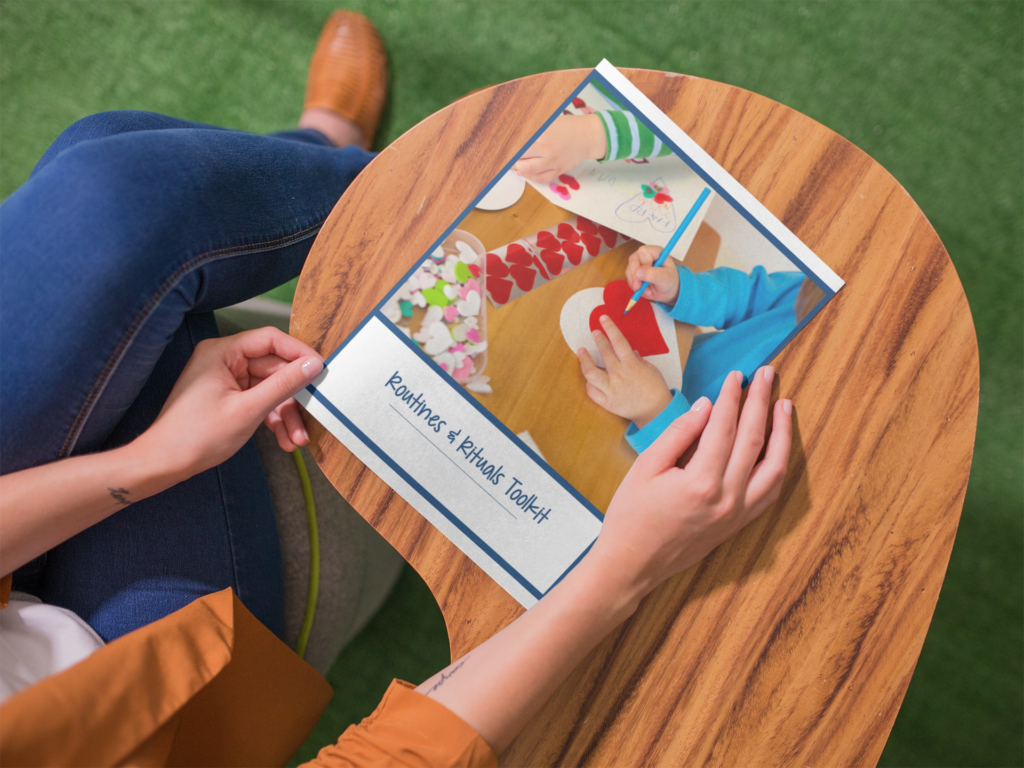
This post contains affiliate links. Roots & Wings is a participant in the Amazon Services LLC Associates Program, an affiliate advertising program designed to provide a means for sites to earn advertising fees by advertising and linking to Amazon.com.


 Making a Flexible First Day Plan for Kindergarten
Making a Flexible First Day Plan for Kindergarten Making a Plan for the Covid Friendly Classroom
Making a Plan for the Covid Friendly Classroom 7 Kindergarten Morning Work Choices for a Soft Start
7 Kindergarten Morning Work Choices for a Soft Start 7 Ways to Make Your Kindergarten Day Flow More Smoothly
7 Ways to Make Your Kindergarten Day Flow More Smoothly
In one blog post I saw you had months of the year with real photos on each month. Where can I find that resource to use in my own classroom?